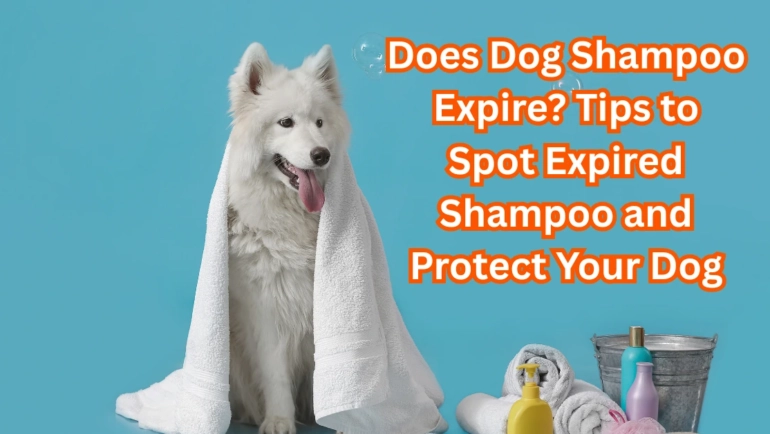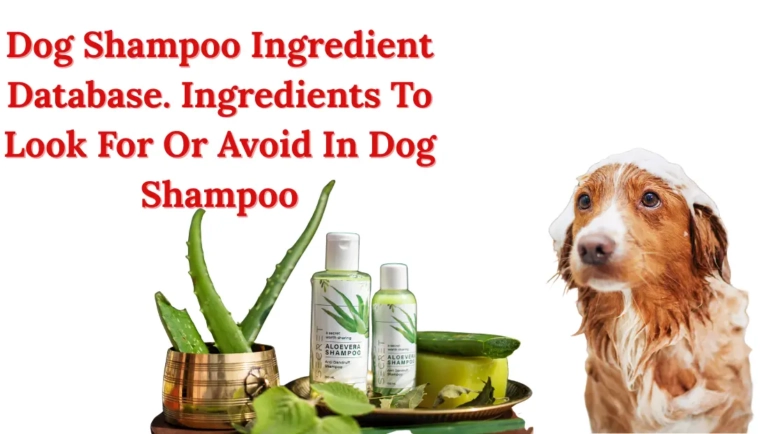10Views 0Comments
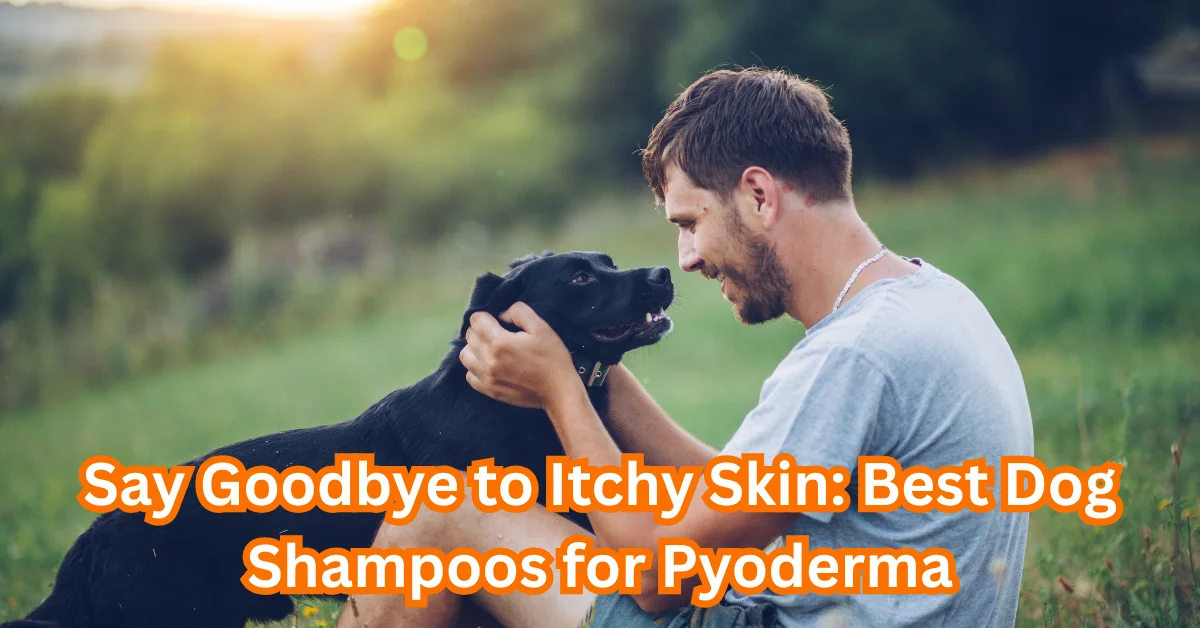
Dog Shampoo for Pyoderma: A Complete Owner’s Guide & Expert’s Tips
What if the secret to easing your dog’s constant itching and discomfort isn’t just in a vet visit, but in the shampoo you use at home?
I still remember Max, a sweet golden retriever I cared for back in 2017 on a dog farm in the Ozarks. A painful skin condition, pyoderma, slowly overshadowed his joyful personality. Watching him struggle broke my heart, and it opened my eyes to how much a simple bath could actually help a dog.
If your dog’s dealing with red, irritated, or flaky skin, you’re not the only one, and more importantly, there is help. In this chapter, I will attempt to educate you about pyoderma, how to identify it, and how the right shampoo can provide genuine relief.
What is the Best Treatment for Pyoderma in Dogs?
The best treatment for pyoderma in dogs is a combination of medicated shampoos, antibiotics, and veterinary guidance. This three-part approach helps reduce infection, soothe the skin, and prevent future flare-ups.
While I was working on a dog farm in the Ozarks in 2017. I discovered that Several dogs developed painful symptoms, redness, scabs, pus-filled bumps, and endless scratching. Max was one of those who had the kindest eyes, but he struggled the most. Watching him suffer was tough, but it taught me a lot about how to treat this condition effectively.
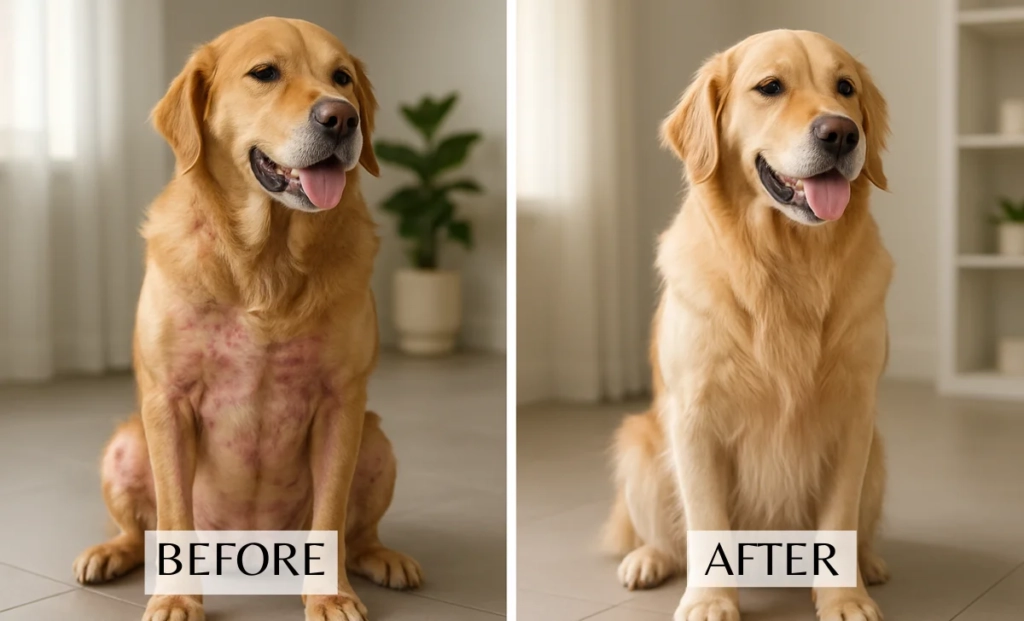
Why Medicated Shampoos Matter
One of the biggest breakthroughs came when we started using medicated shampoos designed for pyoderma. These shampoos contain ingredients like benzoyl peroxide, chlorhexidine, or miconazole, which help kill bacteria, reduce inflammation, and clean the skin deeply.
For Max, switching to a benzoyl peroxide shampoo made a visible difference within a few days. His itching eased, his sores began to heal, and most importantly, he seemed happy again.
Always Work with Your Vet
Every dog’s case is different. That’s why your first step should always be a visit to the vet. Depending on the severity of the infection, your vet might recommend:
- Oral antibiotics to fight the infection from the inside out
- Topical creams or sprays for spot treatment
- Regular medicated baths to keep the skin clean and bacteria-free
With the right care and a little patience, dogs with pyoderma can heal and live comfortably again. The key is staying consistent with treatment and not ignoring those early warning signs.
Should You Bathe a Dog with Pyoderma?
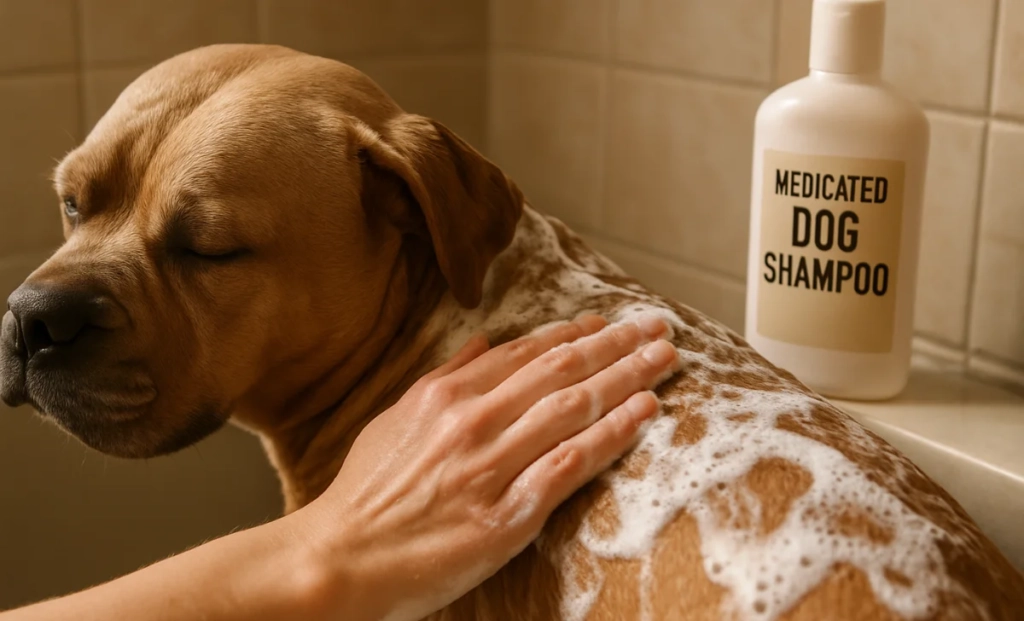
Yes, you should bathe a dog with pyoderma, but only with the right shampoo and frequency. Properly, bathing can soothe irritated skin, remove harmful bacteria, and support healing.
I used to get this question all the time back on the farm, especially when dogs like Bella, a sweet lab mix with appealing eyes, ears and nose, were going through painful flare-ups. At first, I wasn’t sure if bathing would help or hurt. But once we introduced a gentle, medicated shampoo into her routine, her skin noticeably improved in only 1 week, with fewer scabs, less redness, and way less itching.
Why Bathing Helps
Medicated dog shampoos made for pyoderma do more than just clean the coat. They:
- Wash away bacteria, dirt, and allergens
- Soothe inflamed or itchy skin
- Help prevent infections from spreading
For Bella, bathing twice a week with a benzoyl peroxide shampoo worked wonders. She started wagging her tail again after just a few baths.
Be Careful Not to Overdo It
Too many baths, even with medicated products, can dry out your dog’s skin. That can make things worse. Your dog’s ideal bathing schedule depends on their condition, coat type, and skin sensitivity.
Tip: Always ask your vet how often to bathe your dog. Most cases of pyoderma benefit from 1–2 medicated baths per week, but only a professional can give you the best plan.
Is Pyoderma Bacterial or Fungal?
Pyoderma is a bacterial skin infection in dogs, not a fungal one. It occurs when bacteria, most commonly Staphylococcus pseudintermedius, multiply on the skin due to irritation, allergies, wounds, or a weakened immune system.
These bacteria are usually harmless and naturally live on the skin. But when the skin’s barrier is damaged or inflamed, they can overgrow and cause infection. This leads to symptoms like redness, bumps, scabs, pustules, and itching.
Proper treatment depends on identifying the condition correctly. Since fungal infections can look similar to bacterial ones, it’s important to get a diagnosis from a veterinarian. Misdiagnosing the two can lead to the wrong treatment and more discomfort for your dog.
To help clarify the difference, here’s a quick comparison:
| Feature | Pyoderma (Bacterial) | Fungal Infection |
| Cause | Bacteria (often Staph species) | Fungi (e.g., Malassezia, ringworm) |
| Common Symptoms | Pustules, redness, scabs, itching | Greasy skin, odour, discolouration, flaking |
| Usual Triggers | Allergies, wounds, fleas, and scratching | Moisture, poor hygiene, weakened immunity |
| Treatment | Medicated shampoos (e.g., chlorhexidine), antibiotics | Antifungal shampoos, antifungal medications |
| Confirmed by | Bacterial culture or skin cytology | Fungal culture or microscopic exam |
Understanding that pyoderma is bacterial helps guide the use of the right products, like antibacterial shampoos and antibiotics, so your dog can heal faster and stay comfortable.
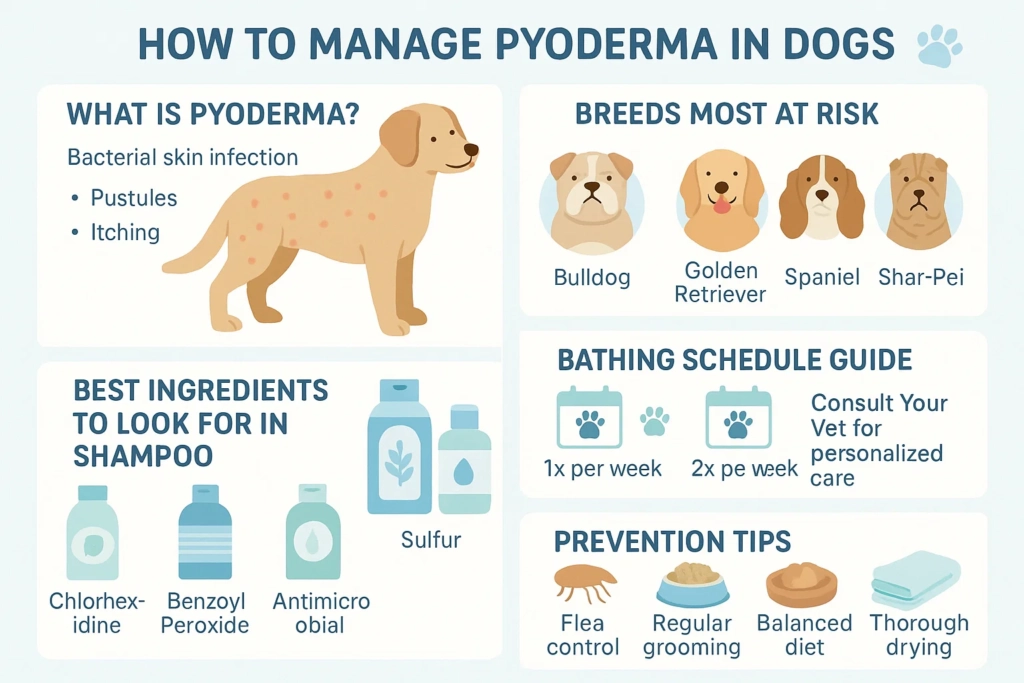
What Shampoo is Good for Pyoderma in Dogs?
The best shampoos for pyoderma in dogs are medicated formulas containing ingredients like chlorhexidine, benzoyl peroxide, or sulfur. These ingredients help reduce bacteria, soothe irritation, and support skin healing.
Key Ingredients to Look For
Not all shampoos are created in the same way, especially when it comes to treating skin infections like pyoderma. Look for shampoos that contain:
- Chlorhexidine – A gentle but powerful antimicrobial that kills bacteria and helps prevent further infection.
- Benzoyl Peroxide – Helps flush out hair follicles and reduce bacterial buildup.
- Sulfur and Salicylic Acid – Often combined to reduce inflammation and promote gentle exfoliation of scabby or crusty skin.
These ingredients work best when used regularly as directed, and most importantly, under the guidance of a veterinarian. Using the wrong shampoo, or using it too often, can make your dog’s skin worse.
What Worked for Us
Back on the farm, we saw incredible results using a benzoyl peroxide shampoo with Max. He had recurring bouts of pyoderma, and within a few weeks of regular use, his skin looked healthier and the itching reduced noticeably. It wasn’t a miracle cure overnight, but it made a real difference.
Today, many vets recommend chlorhexidine-based shampoos as a go-to for bacterial skin infections. They’re widely available, safe for most dogs, and effective when used properly.
Can Humans Catch Pyoderma from Dogs?

No, humans typically cannot catch pyoderma from dogs. Pyoderma is a bacterial skin infection that affects dogs. As I spent more time on the dog farm, I often heard concerns about whether pyoderma is contagious to humans. Fortunately, pyoderma is not typically transmissible to humans. It’s a condition that affects dogs, but humans generally don’t catch it.
The bacteria involved, such as Staphylococcus pseudintermedius, are generally species-specific, meaning they don’t easily transfer between dogs and people. Though it’s still wise to take basic hygiene precautions when caring for a dog with pyoderma. Wash your hands thoroughly after touching, bathing, or applying treatment to a dog’s skin.
In rare situations, especially if a person has a weakened immune system or an open wound, there’s a very small chance that bacteria from a dog’s skin could cause an issue. But for most healthy individuals, the risk is extremely low.
You don’t need to avoid cuddles or care, just be mindful. Wearing gloves when you are medicating baths or cleaning infected areas can provide extra peace of mind.
How to Avoid Pyoderma in Dogs?
To avoid pyoderma in dogs, focus on regular grooming, good hygiene, flea control, and supporting your dog’s overall health. From my experience, regular grooming, a clean living space, and proper hygiene play a huge role in keeping pyoderma at bay.
One of the most important steps is keeping your dog’s skin clean and dry. Moist areas, like under the legs, between the toes, and around skin folds, can easily become breeding grounds for bacteria if not properly dried and maintained. Regular baths (with gentle or vet-approved shampoos), brushing, and towel-drying after walks in wet weather can go a long way.
Fleas are a common trigger for pyoderma. A bite can cause scratching and irritation, which opens the door to bacterial infection. Using flea prevention treatments consistently is one of the most effective ways to reduce this risk.
Diet also matters. A balanced, nutrient-rich diet strengthens your dog’s immune system, which helps their skin fight off infections naturally. Dogs with allergies or sensitive skin may need special diets or supplements, so speak with your vet if you’re unsure.
By staying consistent with basic care and hygiene, you can greatly reduce the chances of pyoderma affecting your furry friend.
What Dog Breeds Are Prone to Pyoderma?

Dog breeds with skin folds, thick coats, or sensitive skin are more prone to pyoderma. These breeds are at higher risk because their skin tends to trap moisture and bacteria, creating the perfect conditions for infection.
Breeds with Skin Folds or Oily Skin
Dogs like Bulldogs, Pugs, Shar-Peis, and Basset Hounds are especially vulnerable due to their deep skin folds. These folds can easily trap dirt, sweat, and bacteria, which can quickly lead to irritation and infection if not cleaned regularly. I experienced this situation with Rocco, a bulldog on the farm, who struggled with repeated flare-ups in the folds of his face and armpits.
Breeds with Thick or Water-Repellent Coats
Golden Retrievers, Labrador Retrievers, Cocker Spaniels, and German Shepherds are also at risk. Their dense or oily coats can retain moisture, especially after swimming or bathing, and make it harder for the skin to breathe. Without proper drying and grooming, bacteria can multiply rapidly.
If you own one of these breeds, prevention is the key. Regular grooming, cleaning skin folds, drying your dog thoroughly after getting wet, and using a vet-recommended shampoo can help keep their skin healthy and reduce the chances of pyoderma.
Though some breeds are more prone than others, any dog can develop pyoderma under the right (or wrong) conditions, so staying alert to skin changes is always a smart move.
How Often Should I Wash My Dog with Pyoderma?
Dogs with pyoderma should generally be bathed 1 to 2 times per week using a medicated shampoo, depending on the severity of the condition. The goal is to keep the skin clean, reduce bacteria, and promote healing without over-drying or irritating the skin.
The right frequency can vary from dog to dog. Some may benefit from more frequent baths during active flare-ups, while others with milder symptoms may only need weekly maintenance. That was certainly the case on the dog farm. Max needed bi-weekly medicated baths to keep his flare-ups under control, while Bella, who had a less severe case, did well with once-a-week baths.
It’s important to use a vet-recommended medicated shampoo and follow all instructions carefully. Over-bathing, even with the right product, can dry out your dog’s skin and make the condition worse. Always consult your veterinarian to create a bathing schedule tailored to your dog’s breed, skin type, and the stage of pyoderma they’re in.
Consistency, gentle handling, and proper rinsing and drying after each bath are all key to supporting your dog’s recovery and preventing future infections.
Final Words
Managing pyoderma might feel like a tough road, but with the right shampoo, a gentle routine, and support from your vet, it’s completely manageable. Your dog deserves to feel comfortable in their skin, and now you know how to help make that happen.
Taking care of Max, Bella, Rocco, and the other dogs at the farm taught me just how far patience and proper care can go. With a little consistency and love, your dog can overcome pyoderma and get back to being their happy, tail-wagging self.
Quick Answers to Your Dog Pyoderma Questions
Here are 8 helpful FAQs to clear up the common doubts dog owners have when dealing with pyoderma, because caring for your pup should feel a little easier.
1. Can pyoderma in dogs heal on its own?
No, pyoderma rarely heals without treatment. It usually requires medicated shampoos, antibiotics, or both to fully clear the infection and prevent it from coming back.
2. Can I use human shampoo on my dog with pyoderma?
No, human shampoos can irritate a dog’s skin and worsen pyoderma. Always use a vet-approved medicated dog shampoo specifically designed for skin infections.
3. Will pyoderma come back after treatment?
Yes, it can recur, especially in dogs with allergies, chronic skin issues, or underlying conditions. Regular grooming and prevention can reduce the risk.
4. What does pyoderma look like on a dog?
It often appears as red bumps, scabs, pustules, hair loss, or flaky skin. It may also have a foul smell and feel warm or crusty to the touch.
5. How long does it take for pyoderma to heal?
With proper treatment, mild cases may improve in 2–3 weeks. Severe or deep pyoderma may take several weeks or longer and require close veterinary care.
6. Can puppies get pyoderma too?
Yes, puppies can develop a form called “puppy pyoderma,” which is usually mild and responds well to topical treatment. It’s more common in wrinkly or fluffy breeds.
7. Should I trim my dog’s fur if they have pyoderma?
Yes, trimming around infected areas can help keep the skin dry and allow medication to work better, but avoid shaving too close without vet advice.
8. Can diet affect pyoderma in dogs?
Yes, poor nutrition or food allergies can weaken the immune system and contribute to recurring skin infections. A balanced, allergy-friendly diet can help.


